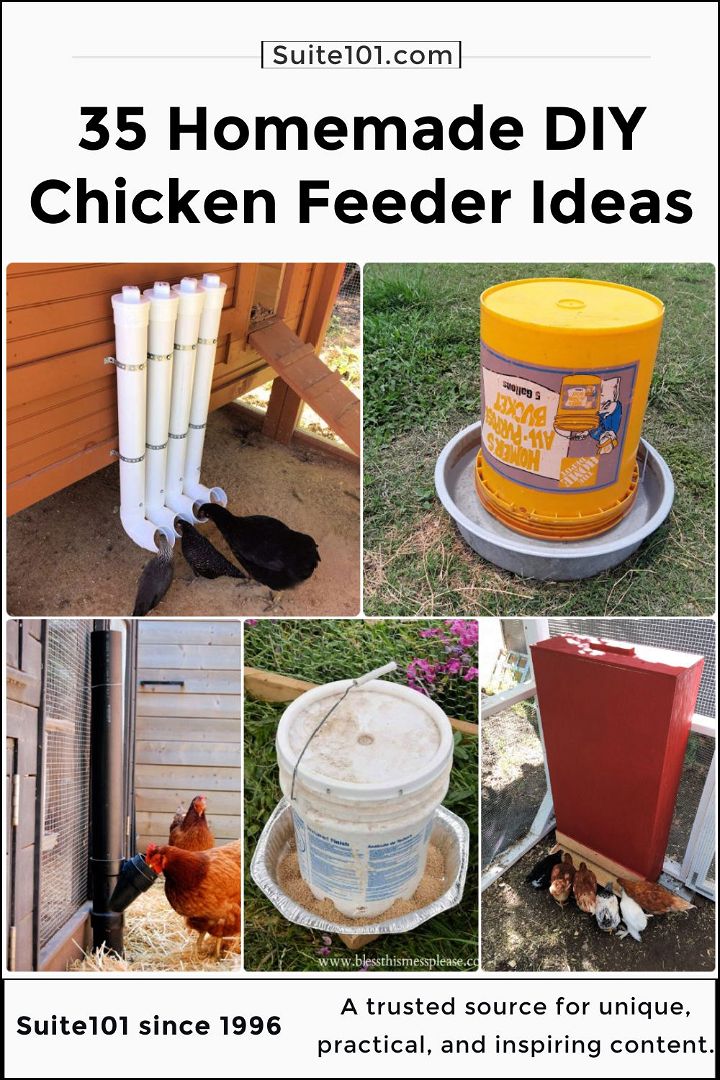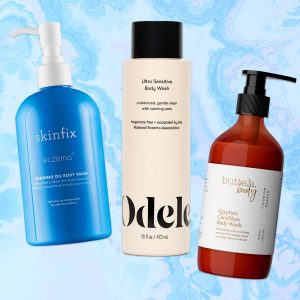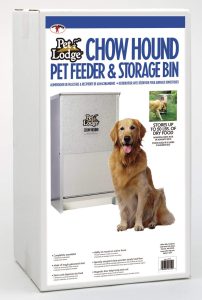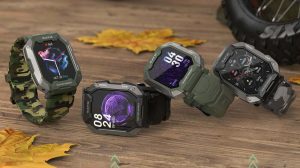Contents
- Benefits Of Galvanized Chicken Feeders
- Choosing The Right Galvanized Chicken Feeder
- Proper Installation And Maintenance Of Galvanized Chicken Feeders
- Tips For Efficient Feeding With Galvanized Chicken Feeders
- Comparing Galvanized Feeders To Other Types Of Chicken Feeders
- Addressing Common Concerns With Galvanized Chicken Feeders
- Frequently Asked Questions On Galvanized Chicken Feeders
- Conclusion
Galvanized chicken feeders are durable and rust-resistant containers used to hold and dispense feed for chickens. They are designed to protect the feed from moisture and pests, ensuring the chicken’s food remains fresh and unaffected.
These feeders are commonly used in backyard poultry farming and small-scale chicken raising operations. They come in various sizes and styles, including hanging feeders, trough feeders, and automatic feeders. Galvanized chicken feeders are a practical and reliable solution for efficiently maintaining the nutritional needs of chickens.
Benefits Of Galvanized Chicken Feeders
Galvanized chicken feeders offer numerous benefits, including durability, longevity, and resistance to rust. These feeders provide a reliable solution for keeping your chickens well-fed and happy throughout their lifespan.
Galvanized chicken feeders are an essential tool for any chicken owner. They offer several benefits that contribute to the improved health and productivity of your feathered friends. In this section, we will explore the advantages of using galvanized chicken feeders, including reduced feed wastage, prevention of contaminants, and increased durability.
Reduced Feed Wastage:
- Feed spillage can be a common issue when using traditional chicken feeders. Galvanized chicken feeders, however, help reduce feed wastage significantly.
- The design of these feeders ensures that the feed remains contained and easily accessible for chickens, preventing them from scattering it around their coop.
- By minimizing feed wastage, you can save money on purchasing additional feed and ensure that your chickens receive the nutrition they need.
Prevention Of Contaminants:
- Contaminated food can cause numerous health problems for chickens and even lead to diseases. Galvanized chicken feeders play a crucial role in preventing contaminants from entering the feed.
- The galvanized metal construction acts as a protective barrier, keeping out rodents, insects, and other unwanted pests that may carry diseases or contaminants.
- The smooth surface of galvanized feeders also makes it easier to clean and sanitize them regularly, promoting a hygienic environment for your chickens.
Increased Durability:
- Galvanized chicken feeders are built to last. The galvanized metal coating provides a robust and long-lasting barrier against corrosion, rust, and weather damage.
- Whether you keep your chickens indoors or outdoors, galvanized feeders can withstand the elements and continue to serve you for years.
- This durability ensures that you won’t need to replace the feeders frequently, saving you both time and money in the long run.
Galvanized chicken feeders offer numerous benefits that contribute to the overall well-being and productivity of your flock. With reduced feed wastage, prevention of contaminants, and increased durability, these feeders are a valuable investment for any chicken owner. By choosing galvanized feeders, you can provide your chickens with a reliable and hygienic feeding solution while optimizing their nutrition and minimizing wastage.
Choosing The Right Galvanized Chicken Feeder
Choosing the ideal galvanized chicken feeder is essential for providing your flock with a durable and reliable feeding solution. These feeders are designed to withstand the elements and protect the feed from pests, ensuring that your chickens always have access to fresh and clean food.
When it comes to raising chickens, providing them with the right feeders is essential for their health and well-being. Galvanized chicken feeders are a popular choice among poultry owners due to their durability and functionality. If you’re considering buying a galvanized chicken feeder, here are some important factors to consider:
Size And Capacity Considerations
- Size matters: Consider the size of your chicken flock when selecting a feeder. Ensure that it can accommodate all of your chickens without overcrowding or leaving any birds without access to feed.
- Capacity: Choose a feeder with an appropriate capacity based on your flock’s size and feed consumption. This will help minimize the frequency of refilling the feeder and reduce the risk of feed waste.
Different Types Of Galvanized Feeders Available
- Hanging feeders: These feeders are suspended from the ceiling or other sturdy structures. They are suitable for preventing chickens from scratching or sitting on the feed, minimizing wastage, and keeping the feed clean.
- Trough feeders: Trough feeders are low-profile and can be placed on the ground or mounted on a raised platform. They allow multiple chickens to feed simultaneously and are ideal for larger flocks.
- Automatic feeders: These feeders are designed to dispense feed automatically, ensuring a constant supply throughout the day. They are convenient for busy chicken owners and help to reduce feed spillage and wastage.
Factors To Consider When Selecting A Feeder
- Durability: Look for galvanized feeders made from high-quality materials that are built to withstand outdoor elements and resist rust over an extended period.
- Ease of cleaning: Opt for feeders with removable parts or easy access to the feeding area for effortless cleaning and maintenance.
- Pest resistance: Choose feeders with features that prevent pests such as rodents or wild birds from accessing the feed.
- Feeder design: Consider feeders with anti-waste features like dividers or slanted bottoms to minimize feed spillage and encourage chickens to eat directly from the feeder.
- Budget: Determine the price range that fits your budget without compromising the quality and functionality of the feeder.
Remember, selecting the right galvanized chicken feeder is crucial for the health and convenience of both you and your flock. By considering factors such as size, capacity, feeder type, durability, ease of cleaning, pest resistance, and design, you can make an informed decision that ensures your chickens have access to clean, fresh feed at all times.
Proper Installation And Maintenance Of Galvanized Chicken Feeders
Proper installation and maintenance of galvanized chicken feeders ensure optimal feeding conditions for your chickens. By following these guidelines, you can provide them with a durable and reliable source of food, promoting their health and well-being.
Steps To Install A Galvanized Chicken Feeder:
- Prepare the feeding area by ensuring a clean and dry surface for the feeder.
- Position the feeder at a suitable height that allows easy access for the chickens.
- Secure the feeder in place to prevent tipping or movement.
- Fill the feeder with the desired amount of chicken feed.
- Monitor the feeder regularly to ensure that it remains level and stable.
- Adjust the feeder height as needed to accommodate growing chickens.
Tips For Keeping The Feeder Clean And In Good Condition:
- Regularly inspect the feeder for any signs of damage or wear.
- Clean the feeder regularly to prevent the buildup of dirt, dust, or mold.
- Use a mild detergent or poultry-safe disinfectant when cleaning.
- Rinse the feeder thoroughly and allow it to dry completely before refilling.
- Store the feeder in a dry area when not in use to prevent rust or corrosion.
- Consider using a feeder cover or protector to shield the feeder from the elements.
Troubleshooting Common Issues With Galvanized Feeders:
- Issue: Feed spills or wastage
- Ensure that the feeder is securely closed.
- Adjust the feeder openings to control the flow of feed.
- Check for signs of damage to the feeder, such as bent or misaligned parts.
- Consider using a feeder with anti-waste features, such as adjustable baffles.
- Issue: Feed clogging or difficulty flowing
- Check for any obstructions or debris in the feeder openings.
- Clean the feeder openings to ensure smooth feed flow.
- Use feed with an appropriate particle size to prevent clogs.
- Regularly inspect and maintain the feeder’s moving parts, such as the mechanism controlling the feed release.
- Issue: Rust or corrosion
- Regularly inspect the feeder for any signs of rust or corrosion.
- Remove rust using a wire brush or sandpaper, and repaint with galvanized paint if necessary.
- Apply a protective coating or oil to prevent future rusting.
- Consider using stainless steel or plastic feeders as an alternative to galvanized feeders.
- Issue: Pest infestation
- Ensure that the feeder is properly sealed and free from gaps or openings.
- Regularly clean the area around the feeder to discourage pests.
- Use pest-proof feeders or implement pest control measures if necessary.
Remember, proper installation and maintenance of galvanized chicken feeders not only ensure efficient feeding but also contribute to the health and well-being of your flock. By following these steps and tips, you can enjoy a hassle-free feeding experience for your chickens.
Tips For Efficient Feeding With Galvanized Chicken Feeders
Ensure efficient feeding for your chickens with galvanized chicken feeders. These feeders are designed to provide a durable and long-lasting solution for feeding your poultry, ensuring they have easy access to their food while minimizing waste. Improve your chicken feeding system with these tips for optimal results.
Galvanized chicken feeders are an excellent choice for ensuring efficient feeding in your chicken coop. With their durable construction and high capacity, these feeders can help streamline your feeding process and make sure your flock is well-nourished. To make the most of your galvanized chicken feeders, consider implementing the following tips:
Proper Positioning Of The Feeder In The Chicken Coop:
- Place your galvanized chicken feeder in a convenient location within the chicken coop. This ensures easy access for your feathered friends and minimizes spillage.
- Keep the feeder away from areas prone to moisture or direct sunlight, as these can affect the quality of the feed and promote mold growth.
- Ensure there is sufficient space around the feeder to allow chickens to approach it from all sides comfortably.
Adjusting The Feeder Height For Optimal Access:
- Set the feeder at an appropriate height so that chickens can access the feed without straining their necks.
- Adjust the height of the feeder as the chickens grow to accommodate their changing needs. A good rule of thumb is to position the feeders at the same height as the backs of the chickens when they are standing.
- Regularly check the height of the feeder to ensure it remains suitable for the current flock size and age group.
Implementing A Feeding Schedule For Better Efficiency:
- Establish a consistent feeding schedule that takes into account your chickens’ dietary requirements and preferences.
- Divide the daily amount of feed into multiple smaller meals rather than providing one large meal. This helps reduce waste and allows all chickens to have equal access to the feed.
- Consider using a timed feeder to automate the process and ensure a steady supply of feed throughout the day.
- Regularly monitor the feed levels and adjust accordingly to prevent over or underfeeding.
Remember, efficient feeding plays a crucial role in the overall health and productivity of your flock. By following these tips for galvanized chicken feeders, you can promote optimal nutrition and reduce feed wastage, ultimately leading to happier and healthier chickens.
Comparing Galvanized Feeders To Other Types Of Chicken Feeders
Galvanized chicken feeders provide a durable and reliable option for feeding chickens. Their corrosion-resistant construction ensures they will last longer compared to other types of chicken feeders. With their sturdy design, these feeders are a practical choice for poultry farmers.
Galvanized Chicken Feeders are a popular choice among poultry owners due to their durability, functionality, and cost-effectiveness. When considering the best type of feeder for your chickens, it’s essential to compare galvanized feeders with other options such as plastic and wooden feeders.
Each type has its own advantages and disadvantages, so let’s delve into the details and discover which one suits your specific needs.
Advantages And Disadvantages Of Galvanized Feeders:
- Rust-resistant: Galvanized feeders are made from galvanized steel, which prevents corrosion and extends the lifespan of the feeder.
- Sturdy construction: These feeders are built to withstand rough treatment and last for years, even in challenging environments.
- Easy to clean: The smooth surface of galvanized feeders makes them easy to clean and maintain hygienic conditions for your chickens.
- Cost-effective: While initially more expensive than plastic feeders, galvanized feeders prove to be a more economical choice in the long run due to their durability.
- Disadvantages: Galvanized feeders are heavier compared to plastic feeders, making them more difficult to move around. There is also a minor risk of zinc toxicity if the galvanized coating is damaged, but this is rare and easily preventable through regular inspection.
Comparison With Plastic And Wooden Feeders:
- Plastic feeders:
- Lightweight and easily portable.
- Resistant to rust and corrosion.
- Minimal risk of injury to chickens due to smooth edges.
- However, plastic feeders may be less durable than galvanized feeders, especially if exposed to UV rays and extreme temperatures.
- They can sometimes be more challenging to clean and may develop scratches over time.
- Wooden feeders:
- Natural aesthetic appeal.
- Provide insulation during colder months.
- Customizable and can be easily built or modified.
- However, wooden feeders are more susceptible to damage from moisture and pests.
- They may require regular maintenance, such as sealing and sanding, to prevent deterioration.
Which Type Of Feeder Is Best For Your Specific Needs?
- If you prioritize durability and long-term cost-effectiveness, galvanized feeders are an excellent choice.
- Plastic feeders are suitable for those who value portability and ease of cleaning.
- If you prefer a natural look and don’t mind regular maintenance, wooden feeders can be a good option.
Consider your specific requirements, budget, and the conditions in which your chickens will be kept. Each type of feeder has its own advantages, so make an informed decision based on your preferences and the needs of your flock.

Credit: suite101.com
Addressing Common Concerns With Galvanized Chicken Feeders
Addressing common concerns with galvanized chicken feeders, this article provides solutions to issues such as rusting, durability, and safety. Discover how galvanized chicken feeders offer a reliable and secure feeding option for your poultry.
Galvanized Chicken Feeders: Addressing Common Concerns
When it comes to providing proper nutrition for your chickens, galvanized feeders are a popular choice. However, many chicken owners have concerns about the safety of these feeders. We will address common concerns surrounding galvanized chicken feeders and provide steps to mitigate any potential risks.
Are Galvanized Feeders Safe For Chickens?
Galvanized chicken feeders are generally safe for chickens when used correctly. They offer several advantages such as durability, resistance to rust, and ease of cleaning. However, it is important to be aware of potential health risks associated with galvanized feeders.
Potential Health Risks Of Galvanized Feeders:
- Zinc toxicity: Galvanized feeders are coated with a layer of zinc, which can be harmful if ingested in large amounts. Zinc toxicity can cause symptoms such as reduced appetite, vomiting, diarrhea, and weakness in chickens.
- Lead contamination: In some cases, galvanized feeders may contain traces of lead, which is highly toxic to chickens. Lead exposure can lead to neurological issues, organ damage, and even death.
Steps To Mitigate Any Potential Risks:
To ensure the safety of your chickens and minimize the potential health risks associated with galvanized feeders, follow these steps:
- Prepping the feeder: Before using a new galvanized feeder, thoroughly clean and rinse it with water to remove any dust, debris, or potential contaminants.
- Phasing in the feeder: Introduce the galvanized feeder gradually to allow your chickens to adjust to its presence. Start by offering small amounts of feed in the galvanized feeder alongside their usual feeding method. Gradually increase the amount of feed in the galvanized feeder over time.
- Monitoring feed consumption: Keep an eye on your chickens’ feed consumption. If you notice a decrease in appetite or any signs of illness, consider removing the galvanized feeder and consult a veterinarian.
- Balanced diet: Ensure your chickens are receiving a balanced diet with all the necessary nutrients. Supplement their diet with fresh fruits, vegetables, and high-quality chicken feed to minimize the risk of zinc toxicity.
- Regular maintenance: Regularly inspect and clean the galvanized feeder to prevent the buildup of mold, bacteria, and other potential contaminants. Replace any damaged or corroded feeders promptly.
Galvanized chicken feeders can be safe and beneficial for your chickens. By following the steps outlined above, you can mitigate potential health risks and provide your feathered friends with a reliable and sturdy feeding solution. Remember to prioritize their well-being by maintaining a clean and balanced feeding environment.
Frequently Asked Questions On Galvanized Chicken Feeders
What Are The Best Feeders For Chickens?
The best feeders for chickens are those that are easy to use, durable, and keep the feed clean and fresh. Gravity feeders are a popular choice as they allow chickens to access feed whenever they need it. PVC pipe feeders with feeding holes are also a good option as they prevent waste and contamination.
Another option is treadle feeders, which only open when chickens step on a treadle, keeping pests away. Wall-mounted or hanging feeders are convenient and save space in the chicken coop. It’s important to make sure the feeders are easy to clean and refill to maintain good hygiene for your chickens.
Choose a feeder based on the size of your flock and consider factors such as weather resistance and ease of access for the chickens.
How Many Chicken Feeders Do I Need For 6 Chickens?
You will need at least two chicken feeders for six chickens.
How Do You Make A Rodent Proof Chicken Feeder?
To make a rodent proof chicken feeder, follow these steps: 1. Choose a sturdy, metal feeder that rats cannot chew through. 2. Ensure the feeder has a tight-fitting lid to prevent rodents from accessing the food. 3. Install a barrier around the feeder, such as a wire mesh or a PVC pipe with small holes, to keep rodents out.
4. Elevate the feeder off the ground to make it difficult for rodents to reach. 5. Keep the area around the feeder clean of spills and scattered food to discourage rodents. 6. Regularly monitor the feeder for any signs of rodent activity and take immediate action to address it.
By following these steps, you can create a rodent-proof chicken feeder that will help keep your chickens’ food safe and secure.
Should You Hang Your Chicken Feeder?
Hanging your chicken feeder is a good idea. It keeps the feed clean and prevents chickens from pooping in it. When placed on the ground, the feeder can easily get contaminated with dirt and droppings. Hanging it at an appropriate height ensures that chickens can access the feed without any hassle, while also minimizing the risk of wastage.
Conclusion
Galvanized chicken feeders are a practical and cost-effective solution for any backyard flock. Their durability and resistance to rust make them a wise investment that will withstand the test of time. Not only do they provide a convenient way to feed your chickens, but they also help to keep the feed dry and free from contamination.
The wide variety of sizes and designs available ensures that there is a feeder suitable for any flock size and setup. Additionally, the ease of cleaning and maintenance make galvanized chicken feeders a popular choice among poultry owners. So whether you have a small backyard coop or a larger commercial operation, consider adding galvanized feeders to your poultry management strategy.
Your chickens will thank you for it with healthier and happier lives.










